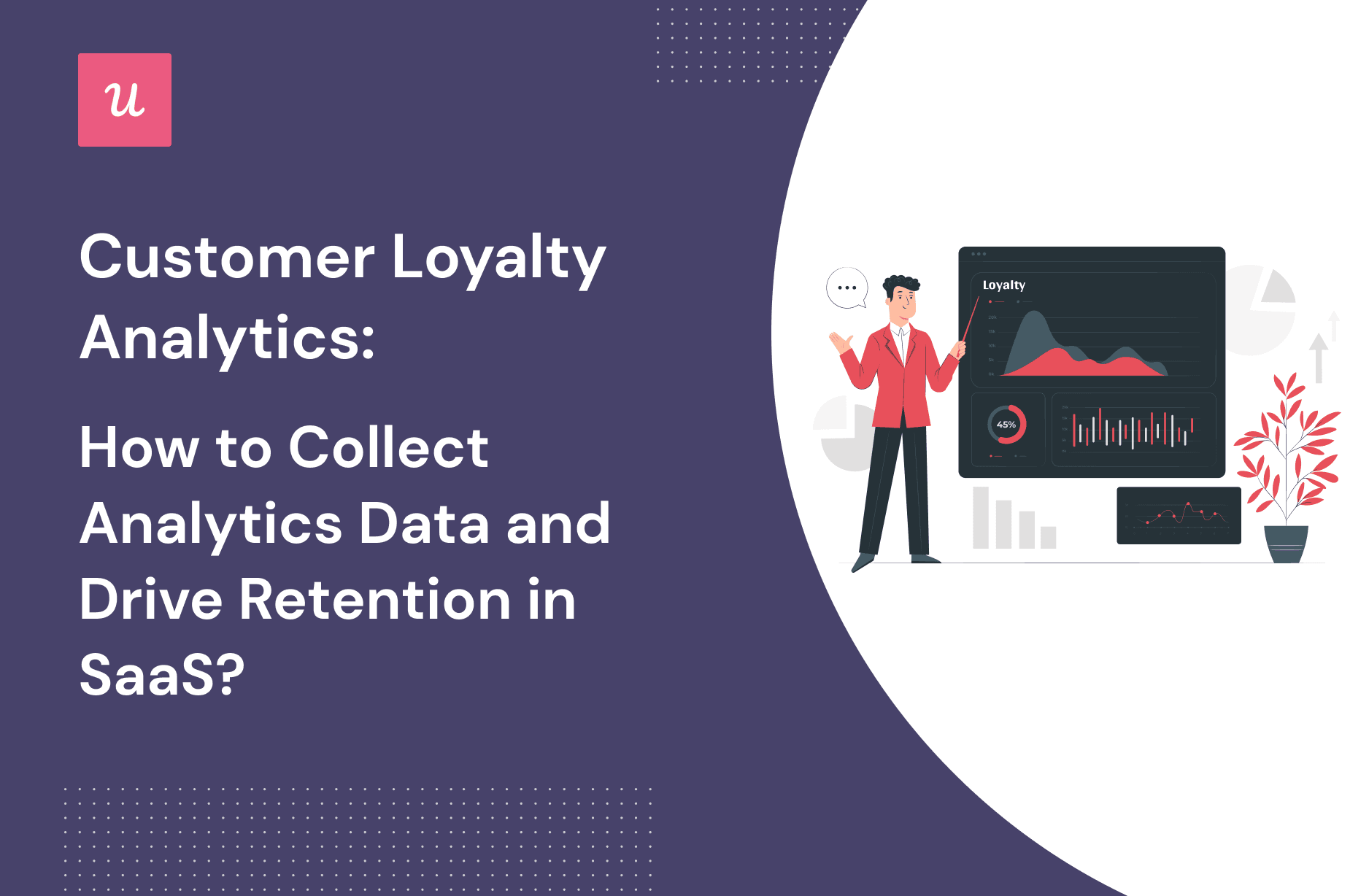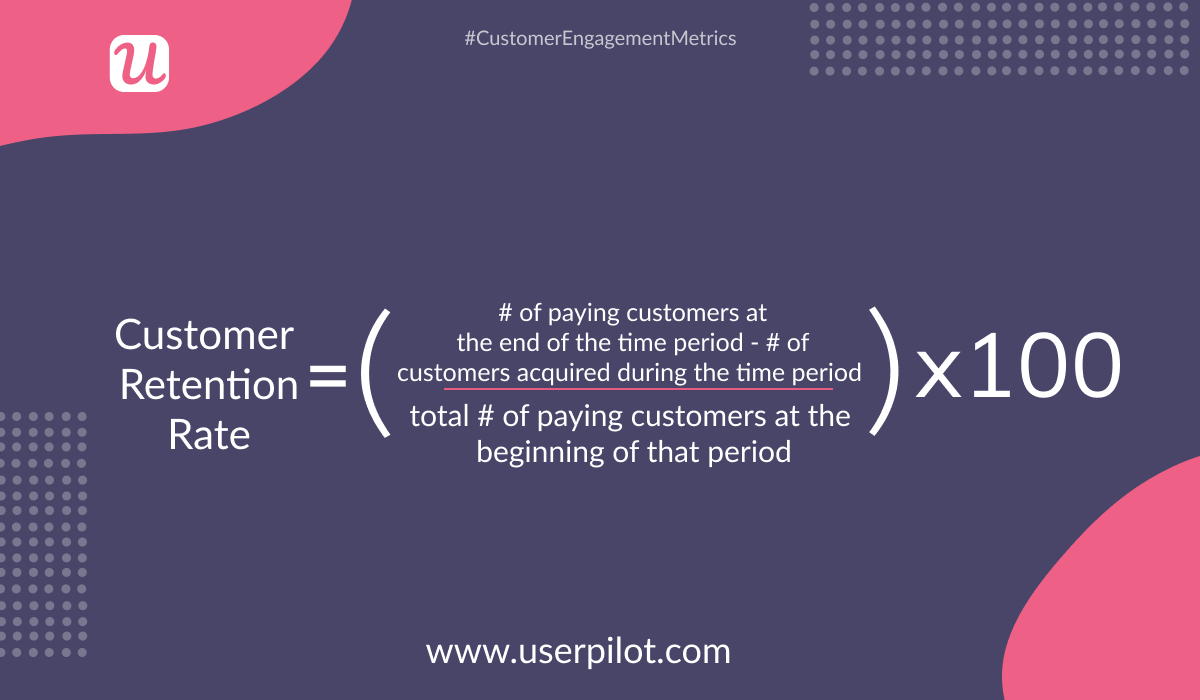
Customer Loyalty Analytics: How To Collect Analytics Data and Drive Retention in SaaS?
How can customer loyalty analytics help you understand the retention potential? Is customer loyalty analytics the same as customer retention analytics?
In SaaS, customer loyalty is extremely important, but it takes time to achieve.
So, let’s see how customer data analytics can help you improve loyalty and drive retention for your SaaS business.
Get The Insights!
The fastest way to learn about Product Growth, Management & Trends.
What is customer loyalty in SaaS?
In SaaS, customer loyalty is a qualitative measure of how likely your customers are to make repeat purchases.
In other words, it’s an ongoing positive relationship between a customer and a company.
What are the characteristics of loyal customers?
Customer loyalty is crucial in SaaS as it encourages existing customers to choose your business over competitors that offer similar benefits.
Here are 5 characteristics of loyal customers:
- They renew their subscriptions regularly.
- They show zero interest in your competitors.
- They use a variety of channels to engage with you.
- They give feedback to highlight your strengths and any areas of improvement.
- They are happy to advocate for your brand and recommend you to others.
What is customer loyalty analytics?
Customer loyalty analytics uses data to find key insights into user behavior that may shed light on how loyal they are to your business. You can gather multiple data points from different sources, but the ultimate goal is to know what inspires your customers’ loyalty.
Customer loyalty analytics vs retention analytics
While customer loyalty can trigger higher retention, loyalty analytics is not the same as retention analytics. The latter involves measuring certain metrics to understand how satisfied existing customers are and what improvements you can make so that they stay happy.
Retention analytics helps you predict when and why customers may leave.
Customer loyalty analytics, on the other hand, shows not only whether your users are satisfied, but also how likely they are to recommend your product. It is important to note, however, that retained customers are not necessarily loyal. Retention prevents churn while loyalty ensures growth.
Why is collecting customer loyalty analytics data important?
Let’s see why collecting customer loyalty analytics data is really important.
Understand patterns of customer loyalty
You can identify patterns that will help you understand what causes customers to be loyal to your brand. You can then highlight those aspects of your product or customer service in your sales and marketing campaigns. Analyzing customer loyalty data also helps you figure out what needs to change in order to improve loyalty.
Improve customer experience
According to the 2021 Forrester’s Customer Experiences Index, businesses that were exceeding customer expectations made significant profits. Customer loyalty analytics can help you find the friction points that impact customer loyalty. Fixing these would allow users to get enhanced in-app experiences and achieve value faster.
Boost customer lifetime value
Motista found that users with an emotional relationship with a company have a 306% greater customer lifetime value. Analyzing customer loyalty can help you find upselling opportunities to drive account expansion. By nurturing loyal customers with contextual upgrade prompts you can improve the CLV.
6 Sources to collect data and measure customer loyalty
Here are 6 key sources you can use to track and measure customer loyalty.
Customer retention rate
The customer retention rate refers to the percentage of customers your business retained over a specific period. To calculate this metric, divide (the number of paying customers at the end of the period minus the number of acquired customers during that period) by the number of paying customers at the beginning of that period and multiply the ratio by 100.

Maintaining a loyal customer base is as important to your business’s growth as acquiring new customers. And CRR lets you understand how your users feel about renewing their subscriptions with you.
You should always use this metric in conjunction with the customer churn rate to gain better visibility into your organization’s renewal rates. This will also help you predict your future revenue streams better.
When your business loses more customers than it acquires, you can examine potential issues and take measures to increase customer loyalty and retention.
Repeat purchase rate
You might confuse the repeat purchase rate with the retention rate since they both involve renewed subscriptions. However, they have one major difference.
The retention rate only accounts for customers remaining with you at the end of a period while it omits any new customers you gained during this time. On the other hand, the repeat purchase rate involves anyone who renews their business with you.
The repeat purchase rate is equal to the number of customers who have bought a subscription plan more than once, divided by the total number of customers multiplied by 100.
Suppose your SaaS business has 200 customers, and 160 of them repeated business with you. This makes your RPR: (160/200) * 100% = 80%.

You can measure RPR from time to time to keep observing any changes in customer purchasing behavior.
A healthy RPR suggests that customers are getting increased value from your business. Therefore, you can use the metric to evaluate your company’s long-term performance and ensure higher customer lifetime value.
Net Promoter Score
The Net Promoter Score measures user sentiment and loyalty. It gives an idea of how likely your customers are to stay or look for substitutes.
To find your NPS, you need to use an NPS survey, which asks users how likely they are to recommend your product to others on a scale from 1 to 10. Data by Yopto showed that 60% of users would tell people about a company they feel loyal to.
The NPS survey allows you to segment customers into 3 groups:
- Promoters – give a score of 9 or 10
- Passives – give a score of 7 or 8
- Detractors – give a score of 6 or below.
The Net Promoter Score equals the difference between the percentage of promoters and detractors.
For instance, if out of 60 responses 25 were promoters and 10 were detractors, your NPS would be [(25-10)/60] * 100 = 25.

The NPS survey helps you separate your loyal customers from the disengaged ones. Add a qualitative follow-up question so customers can tell you what they love about your product and what they would like to see improved.

Customer satisfaction score
If you want to know how satisfied your users are with a particular product, service, or experience, the customer satisfaction score is the right metric for you.
Like the NPS survey, a CSAT survey asks customers to rate their experience. You could, for instance, ask customers about their satisfaction with customer service or the helpfulness of certain help articles. Unlike NPS, which focuses on the entire company, CSAT measures short-term, specific user satisfaction.

To calculate the customer satisfaction score, divide the number of positive responses by the total number of responses, and multiply the result by 100. For example, if 40 out of 60 responses were positive, the CSAT score would be (40/60) * 100 = 66.67.
Measuring the CSAT at multiple touchpoints across the customer journey will help you understand the overall level of customer satisfaction. The insights can help you identify friction points and patterns that lead to customer loyalty.
Customer effort score
The customer effort score looks at how easy or difficult it is for customers to interact with your business. These interactions include feature requests, using the resource center, or even a simple question to a customer support agent.
To measure the CES, divide the number of “agree” responses in the survey (ratings of 5, 6, or 7) by the total number of responses, and multiply the ratio by 100. Suppose 80 customers answered the survey and 40 of them responded with 5+ on a 7-point scale, the CES would be (40/80) * 100= 50.

Insights from the customer effort score can help you act on customers’ concerns and proactively limit the spread of negative word-of-mouth.
If customers feel they are being listened to, they are more likely to be patient with you when they encounter problems and also provide useful feedback.
Furthermore, you can identify specific friction points and optimize the customer experiences before customers decide to churn.
Rating and reviews
Although there is no formula for this, you should look for reviews and ratings on trusted sites such as G2, Trustpilot, and Capterra. You should also use social media channels to solicit reviews and learn more about your customers.

This example shows how such reviews allow you to understand your customers’ likes and dislikes so that you can meet their needs accordingly.

How to increase retention using customer loyalty analytics?
Now let’s find out how you can use the results from customer loyalty analytics to improve your retention rates.
Track in-app behavior and segment customers based on usage rate
Tracking in-app customer behavior will help you figure out how customers use your product.
Userpilot enables you to segment customers based on their product or feature usage rates. You can simply tag any UI pattern that will trigger after users click on that specific area. In this way, you’ll be able to figure out which users are most active and inactive, and what features they use most frequently and least frequently. Then you can separate customers into inactive users, basic users, power users, and advocates.

Power users and advocates are the two of the most significant assets for your business. They have the highest chance of becoming your loyal customers. They use your product frequently, experience a lot of value from it, and are completely committed to your brand.

Send NPS surveys to collect feedback and measure customer loyalty
As has been discussed before, NPS surveys are very useful for collecting valuable feedback and measuring customer loyalty.
Promoters receive continuous value from your business. When you make customers stick around, they may even become loyal brand advocates who help you gain more business. When you have the score along with the follow-up question, you can make any necessary improvements to convert detractors and passives into promoters.

With Userpilot, you can create in-app NPS surveys code-free and prompt them to appear to customers contextually. You can also segment your customers based on their NPS scores for targeted marketing.

Implement a customer loyalty program and reward repeating customers
After identifying loyal customers, you should motivate them by offering small rewards through customer loyalty programs.
Implementing a customer loyalty program is a great strategy to retain current customers and encourage them to repeatedly pay for your product instead of trying out your competitors.
For announcing rewards, you can create modals code-free with Userpilot. By rewarding customers for their support, you make them feel appreciated and make them more likely to stick with your product.

Encourage loyal customers to write reviews and participate in case studies
Loyal customers are the best customers to get reviews from. They can boost brand awareness and greatly influence potential and existing customers with positive word-of-mouth.
You can convince brand advocates to share your product with their network, leave testimonials, and write reviews on platforms like ProductHunt, G2, and Capterra.

Loyal customers are also perfect for participating in a case study. If they agree to it, you might be able to publish a case study that highlights the best features of your brand and entices more visitors to your product.

Wrapping it up
In order to ensure sustainable growth for your business, you need loyal customers. By using loyalty analytics, you can identify customers who need special attention and retain loyalty among existing customers.
Want to get invaluable insights into your customers’ behavior, run NPS surveys and collect feedback? Get a Userpilot demo and see how you can boost customer loyalty in your SaaS.




